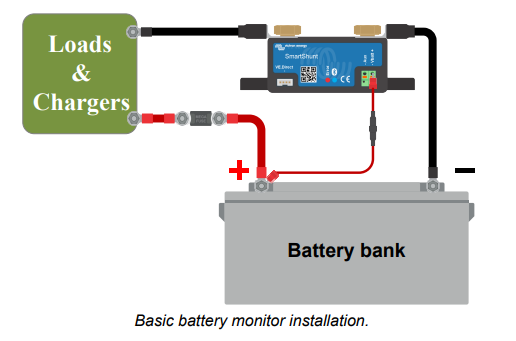Hi, I hope some one can help. I'm looking to install a Smart Shunt to monitor battery usage. I've checked the diagrams and I can see that it is indicated to connect the negative terminal of the DC electrical system to the SmartShunt "LOAD MINUS" terminal (A). (ie the Negative Load)
However, in the campervan I have (the battery is fitted directly under the driver seat) - there is only one cable running from the negative terminal of the battery and it goes directly to the metal framework of the driver seat (presumably the chassis ground). I've located the 12v fuse box and followed the the negative cable and it dissappears behind the units and I have no idea where that might be connected (I have not located a negative bus bar of any kind)
Any suggestions appreciated.
Can I just install the shunt between the negative terminal of the leisure battery and the chassis ground?
- Home
- Anonymous
- Sign in
- Create
- Spaces
- Grafana
- Node-Red
- Unsupported topics
- Questions & Answers
- Modifications
- Communauté francophone
- Deutschsprachiger Bereich
- Preguntas en Español
- Explore
- Topics
- Questions
- Ideas
- Articles
- Badges
question
Smart Shunt Location Confusion
Thanks for the reponse. I did look at the manual, but I was thrown by the diagram which suggested the LOAD MINUS needed to be connected to the Loads and Chargers, when my Battery negative terminal is directly connected to the chassis/earth.
Really?
The advise says the shunt needs to be placed on the negative main battery cable between your battery and your chargers and loads. This is typically before your negative battery lead reaches your negative bus bar where other negative connections are made for chargers, inverters, and 12 volt distribution fuse panels. However, I don't have a negative bus bar and the 12v fuse panel appears to go straight to the van chassis.
So I can just place the shunt right between the negative terminal on the leisure battery and the earth connection point underneath the drivers seat? And I will still get all the accurate readings?
(Sorry for asking for additional clarification, I just want to be sure!)
When installing the shunt basically all you are doing is splicing it tnto the negative cable between the battery's negative terminal and to where it is grounded. The shunt itself is powered by the red wire which goes to the positive terminal of the battery.
I'm not sure what advice you are reading but the following is a copy and paste from the SmartShunt owner's manual and is how I have my own installed:
-----------
3.4. Basic electrical connections
Connection procedure:
Connect the negative battery terminal to the M10 bolt on the "BATTERY MINUS" side of the shunt. Tighten the shunt bolt with a maximum torque of 21Nm.
Note that there should be no other connections on this side of the shunt or on the negative battery terminal. Any loads or chargers connected here will be excluded from the battery state of charge calculation.
Connect the negative of the electrical system to the M10 bolt on the "LOAD MINUS" side of the shunt. Tighten the shunt bolt with a maximum torque of 21Nm. Make sure that the negative of all DC loads, inverters, battery chargers, solar chargers and other charge sources are connected “after” the shunt.
Connect the M10 eye terminal of the red cable with the fuse to the positive terminal of the battery.
The battery monitor is now powered up. .
----------
If you need a Victron manual they can be downloaded from here:
question details
49 People are following this question.
